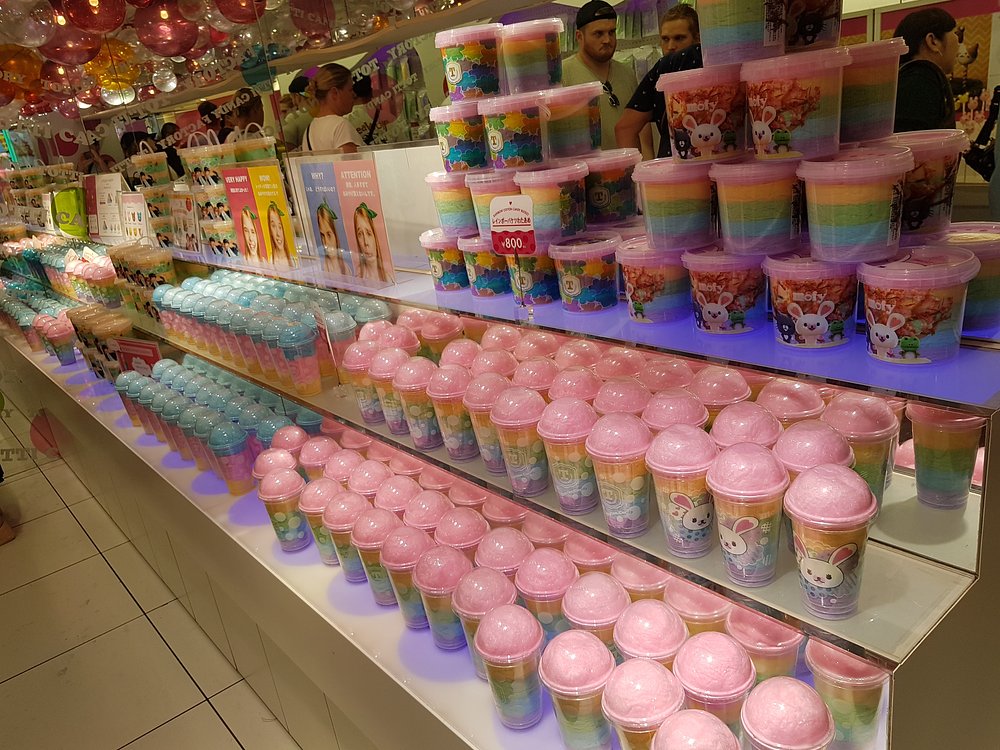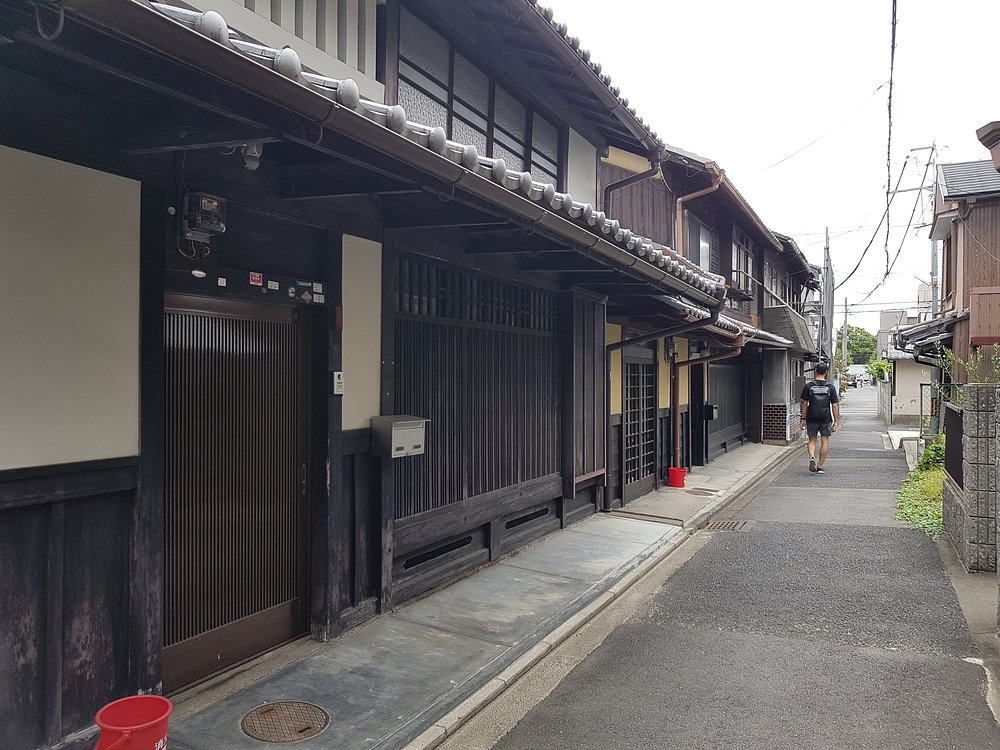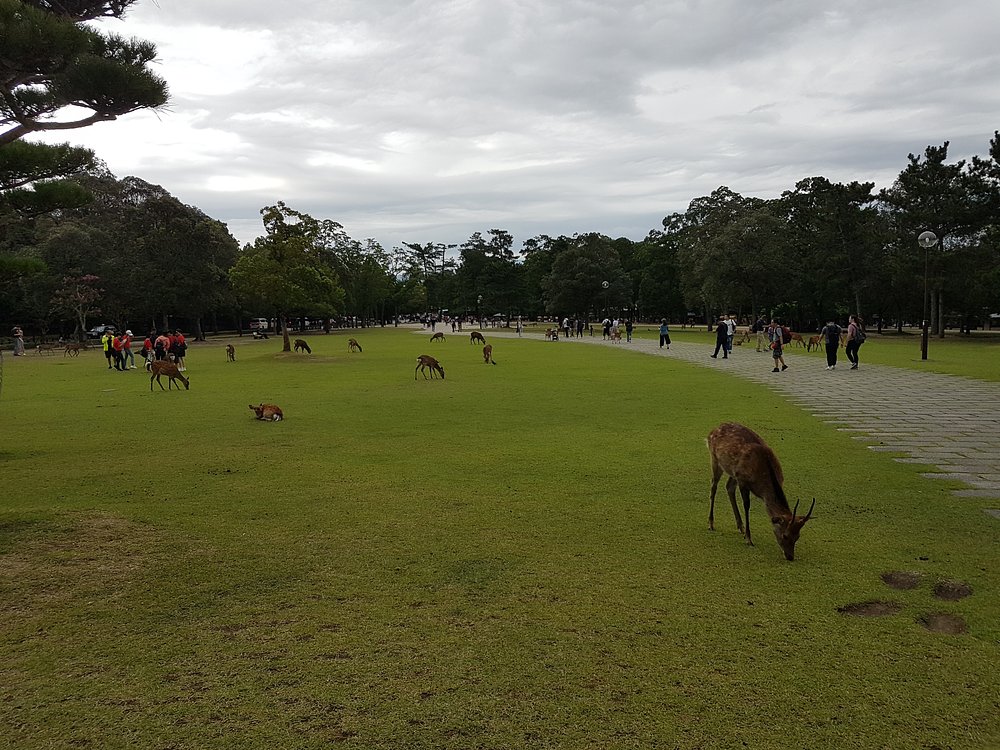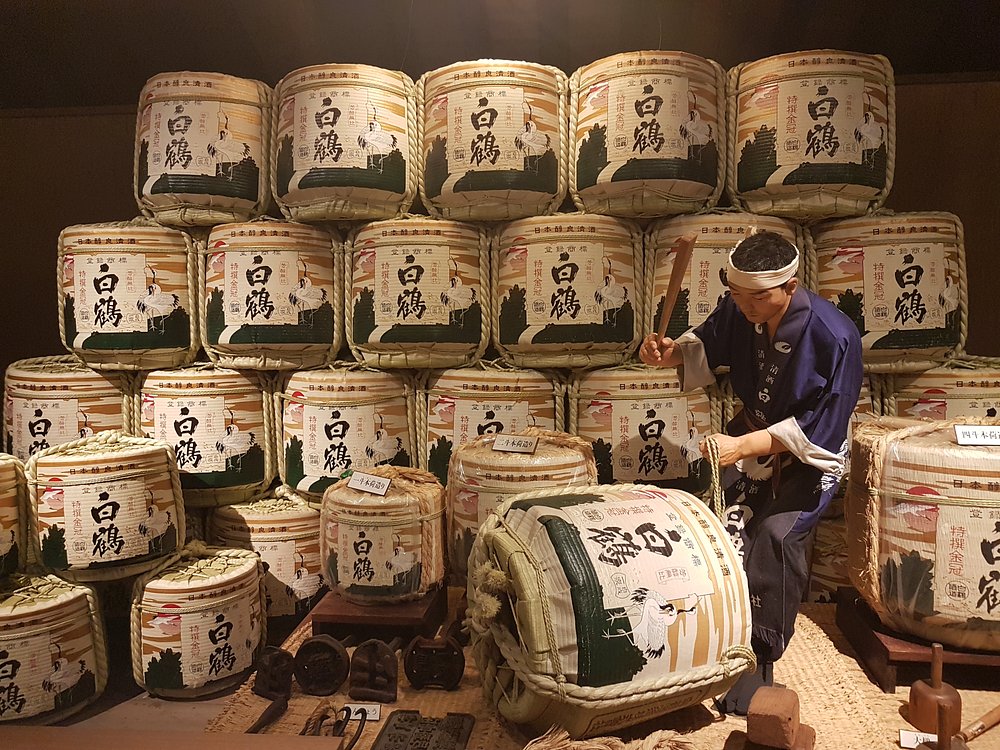Arrival
Osaka is the third biggest city in Japan, and much like Tokyo, has a comprehensive internal metro, urban train, and bus system. Note that the Shinkansnen Shin-Osaka station is not the same as the general rail Osaka Station, though the two are linked by rail. Neither is located in the downtown core of Osaka, known as Namba.
Day 1: Nara Ko-en
Nara Park is about 45 minutes from downtown Osaka, but it is worth the visit for it's most famous feature - urban deer. The deer are accustomed to people, and the people to the deer; for example, cars will yield the right of way. Around the park there are salesmen who will sell biscuit packs to feed the deer, but note that the deer are smarter than you think and may start nipping at your bags or pockets to their treats. If you happen to find a well behaved deer, they will bow to you to ask for a biscuit.
In addition to the deer, Nara Park hosts various temples, but the two most notable are Kofukuji and Todai-ji. The former has the second tallest pagoda in Japan (Toji in Kyoto beats it), while Todai-ji hosts the largest bronze Buddha in the world inside one of the largest timber buildings in the world. I hope you pack your extra-extra wide lens, because I tried and failed to capture the enormity of the Biddha.
Day 2: Osaka Castle and Grounds, Dotonbori
First thing's first, Osaka Castle is not an original, and they don;t try to hide that fact. Nevertheless, the castle, castle grounds, and surrounding park are stunning, and the castle museum tells the story of the unification of Japan. The castle also sits fairly high up, and gives fantastic 360-degree views of the city. The park around the castle is also quite enjoyable, and particularly peaceful in comparison to the next stop.
Dotonbori literally means "ruin yourself" and rightly so, this nightlife district is fraught with unhealthy foods, excessive commercialism, and more neon than your eyes were prepared for. Nevertheless, it is fun to wander around and see the various different stores, restaurants, and arcades in the area, and there is never a dull moment. The district is named after the canal it straddles, and there are boat rides available along the canal if that is something you are interested in.
Day 3: On Your Way Out
On the shinkansen route from Osaka to Hiroshima, there two particular points of interest: Kobe and Himeji.
- Kobe is Japan's top sake producer, and many of the breweries have small museums, tasting rooms, and guided tours to highlight the process and history of sake. You are also unlikely to see the same variety and low prices in any other location in Japan.
- Himeji is home to Himeji Castle, one of the few original castles in Japan. The castle itself is remarkable, but it is empty. However the Himeji Castle Gardens are worth a visit all on their own as an absolutely stunning example of Japanese landscape architecture.
Departure
As noted in the arrival section, be sure you check which of the two Osaka train stations you may need to go to. The city, like Kyoto, is serviced by Kansai International Airport.







Share your thoughts
Please Sign In to leave a comment.
Please Sign In to leave a comment.